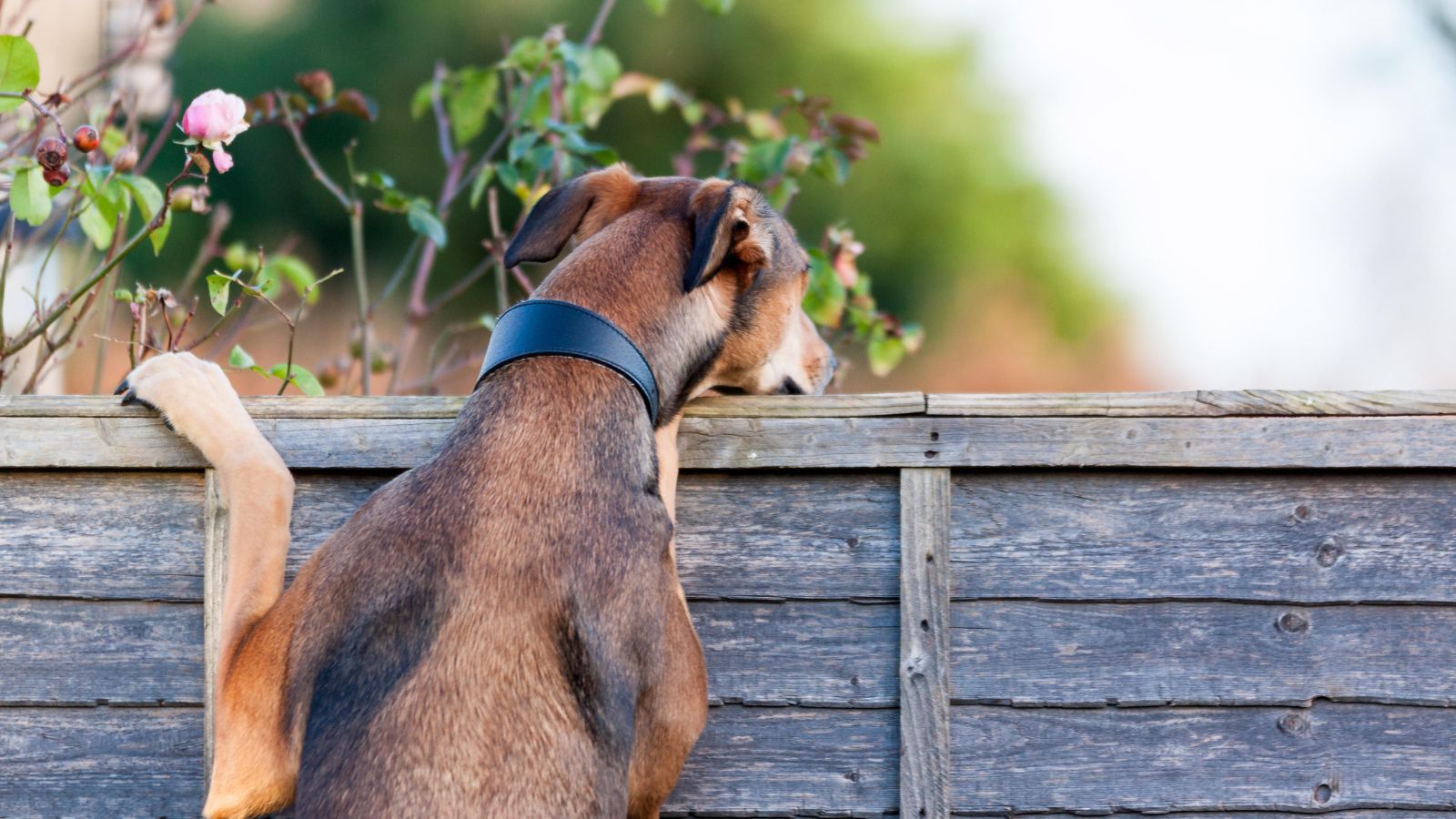How to dog-proof fencing – 6 ways to keep yours in and others out
Dog proofing your fence is important to ensure your pet is kept safe and happy. We’ve asked the experts for their advice on the best way to go about it


To keep your pet safe and your boundary sound, knowing how to dog-proof a fence is vital. It can not only save you stress and heartache in the long run, avoiding any potential escape routes, but also ensure that neighbors' dogs are kept out, too.
So whether deciding on the best height of the posts to assessing the materials used, there are many factors to keep in mind. We’ve asked the experts for their pet-safe garden fence ideas and advice, whether you are looking to build a fence for your backyard or are looking to make repairs.
How to dog-proof a fence
There are many ways to dog-proof fencing, depending on which type of fence you have, and the breed of dog or the problem they are causing. Below, we investigate the most common problems.
1. Ensure your fence is high enough
Whilst the height of the fence is a valid consideration for a leaping dog, it is generally accepted that around 6ft is appropriate, and most dogs will not jump over it. However, all canines are different, so consider all your options before you embark on any project.
‘The first step in dog-proofing a fence is understanding your needs’, explains Liz Baessler from US-based gardening website, Gardening Know How.
If your fence is proving a little too short for a very adept-at-escaping dog, you could look at trellis ideas that can quickly and easily add a couple of feet to the height of your fence. Or, look to grow evergreen climbers that will add to the bulk of the fence, making it harder for the dog to jump over it.
2. Make sure there are no gaps between panels and posts
‘A Border Collie could jump a high fence, while a Chihuahua could squeeze through a narrow gap between slats, and the fence for each would have to be modified accordingly,’ Liz advises.
Design expertise in your inbox – from inspiring decorating ideas and beautiful celebrity homes to practical gardening advice and shopping round-ups.
3. Stop the burrowers
Ever watched The Great Escape? If you have, you'll know that determined digging can get you past the most forbidding of fences. So, it’s more likely that a small dog, particularly terriers, who love to dig, will try to escape underneath the fence.
So-called ‘diggers’ aren't just endangering themselves, but can also be weakening posts and causing damage to the wooden panels. If that's the case, you'll soon find you have to fix a leaning fence, so it’s best to consider some tougher options.
The toughest, but hardest to install is a concrete footer instead of a wooden one at the base of the fence. Most likely this will need to be done by a professional, as it will require removing all your fencing minus the posts, pouring the concrete and once set, re-assembling all the fence panels on top of the new concrete base.
You could also try an L-shaped footer – wire fencing that sits at the base of the fence and then along the ground next to it, like you might find in a chicken coop to keep foxes out. To make it look more aesthetically pleasing, you can bury this fencing underground or grow plants over it to disguise the wire.
Or, look to a clever landscaping option, such as contained raised garden bed ideas or rock garden or even planting prickly evergreens, such as holly, to discourage the dog from going near the fence at all. Or try planting something dense like a yew or laurel hedge at the base of your boundary line.
If your pet loves digging, growing grass with dogs can also be problematic, so you might have to reconsider your lawn choices in certain areas too.
4. Choose the right fencing material
Firstly, consider that there are certain types of fence materials that would not be suitable, such as picket fences or barbed wire.
If you are considering a mesh fence, there are options which are stronger and more robust than you may think. Texas-based company Betafence provides mesh fencing which is composed of ‘durable welded wire mesh panels with rectangular meshes and horizontal reinforcement ribs’.
It may be a completely different, more utilitarian look, but as Chris Langwell from Betafence advises, ‘it guarantees strength and rigidity’ so it could be a good option for your dog.
Mesh fencing can be a great option for more security too. And there are bespoke options that can be extra tall or include a lean-in section, perfect to deter your dog from climbing.
Dogs with the heft to destroy wooden fences might be better contained if you install a chain link fence and grow climbers to disguise it; dogs that chew wooden fencing might be less tempted if you install a vinyl fence.
If you are considering a more cost-effective option, a wire or chain fence will allow you to have more flexibility. If you have a dog that likes to climb, you can build a leaning top section using the wire mesh, angling the top section inwards so it’s impossible for your dog to climb.
5. Consider an invisible dog fence system
If you have a real problem whereby your pet is endangering their own lives by persisting in trying to escape, you could consider invisible dog fence systems. These devices are installed around the perimeter of your yard, and the system sounds an alarm if your dog goes near the coded area, i.e. near the fence.
If your dog continues approaching the fence, a tone will correct your dog (though note that some can be programmed to give dogs a very small electrical shock, which we do not approve of). In time the system trains your dog about which areas to avoid in the yard.
Amazon sells this invisible dog fence system, which has a tone only mode.
5. Remove the temptation
It could be that your dog reacts to pets or children in the adjacent garden, if this is the case then avoid mesh, chain or wire fencing options that allow the dog optimum viability about what lies beyond.
‘The best catch-all dog proof fence is a solid, two-meter-high privacy fence,’ Liz Baessler from Gardening Know How advises.
6. Work on training
Above all of course, ensuring your dog is well trained will help prevent those naughty habits such as tunnel digging and fence climbing. Adding new fences, concrete footers or indeed a more complex system should only serve to help and support your dog as they learn. The ultimate goal, through training, is for your pet to avoid any of these behaviors so that everyone inside and outside your home can be kept happy and safe.
What can I put on a fence to stop my dog chewing?
Bodhi Dog Not Here! is Amazon's highly-rated, top-selling product to stop dogs chewing. You can also spray the areas they chew with apple cider vinegar, which they hate the strong smell and taste of. Note, each time it rains you will need to reapply both.

Steph Hendries is a freelance journalist who has contributed to many different interiors websites including Homes & Gardens, Ideal Home and Livingetc. She has also worked on a range of social content for property brands such as Zoopla and Boomin. Steph writes for Homes & Gardens Solved section, concentrating on DIY, how to, cleaning and organizing content.